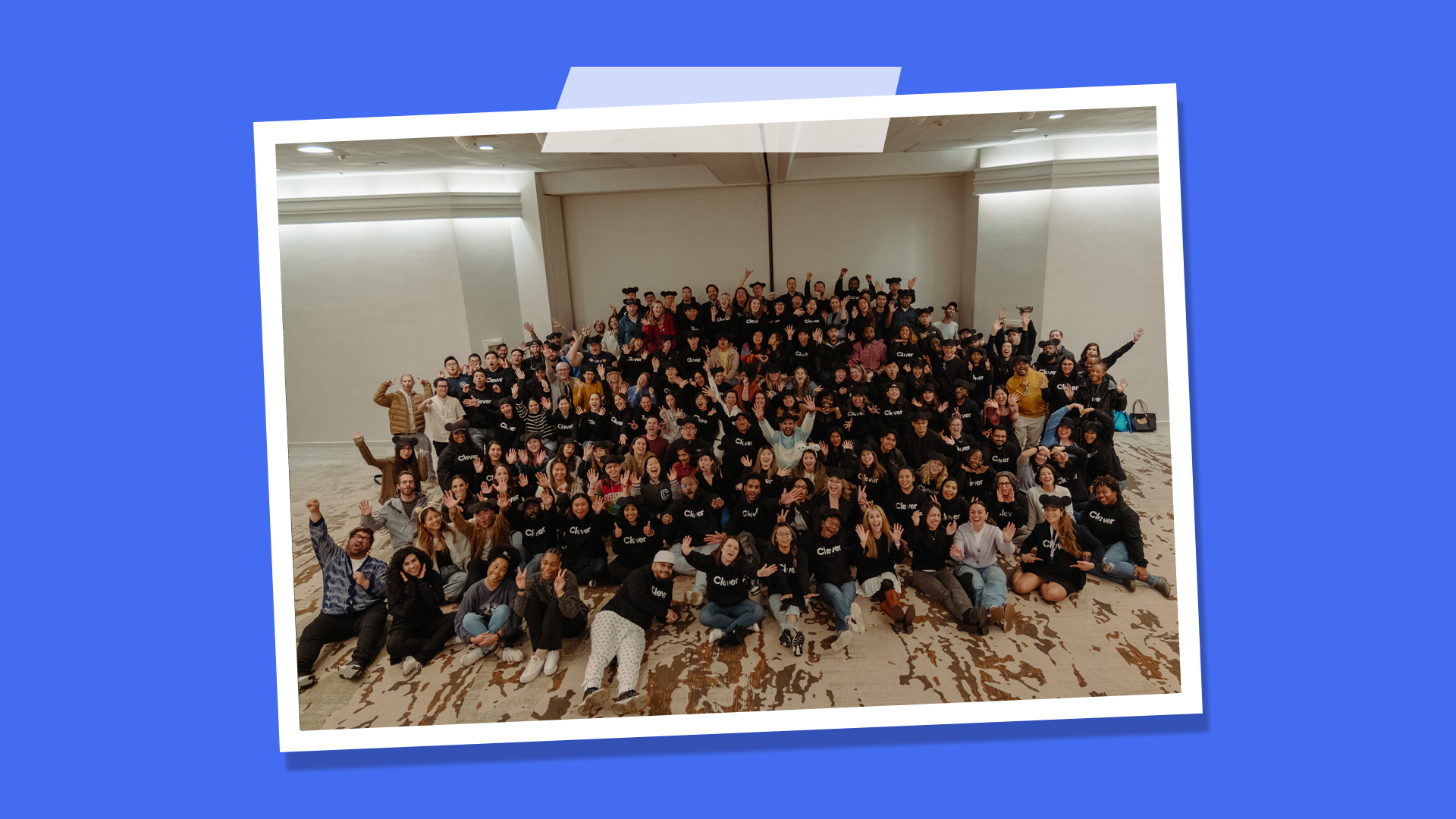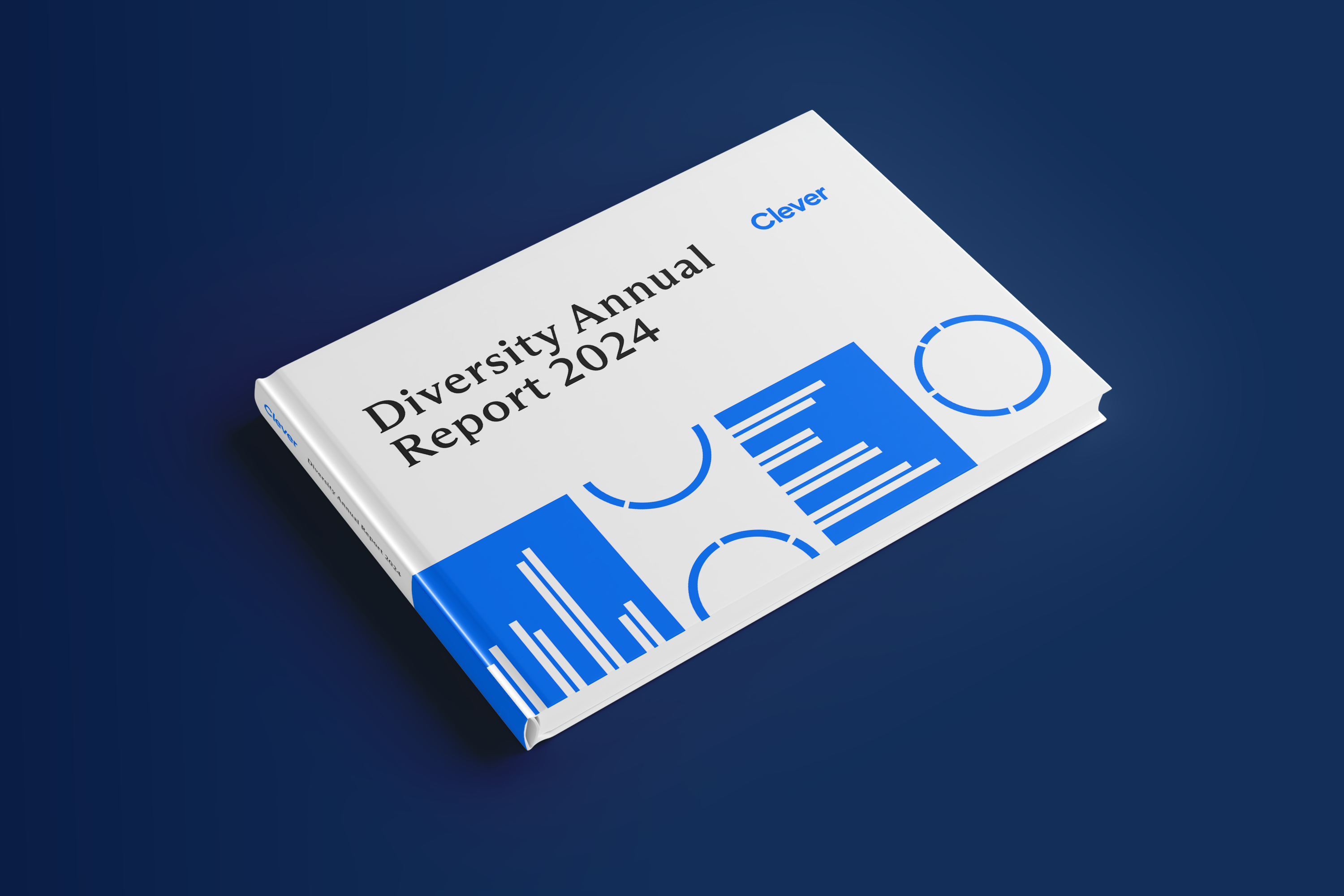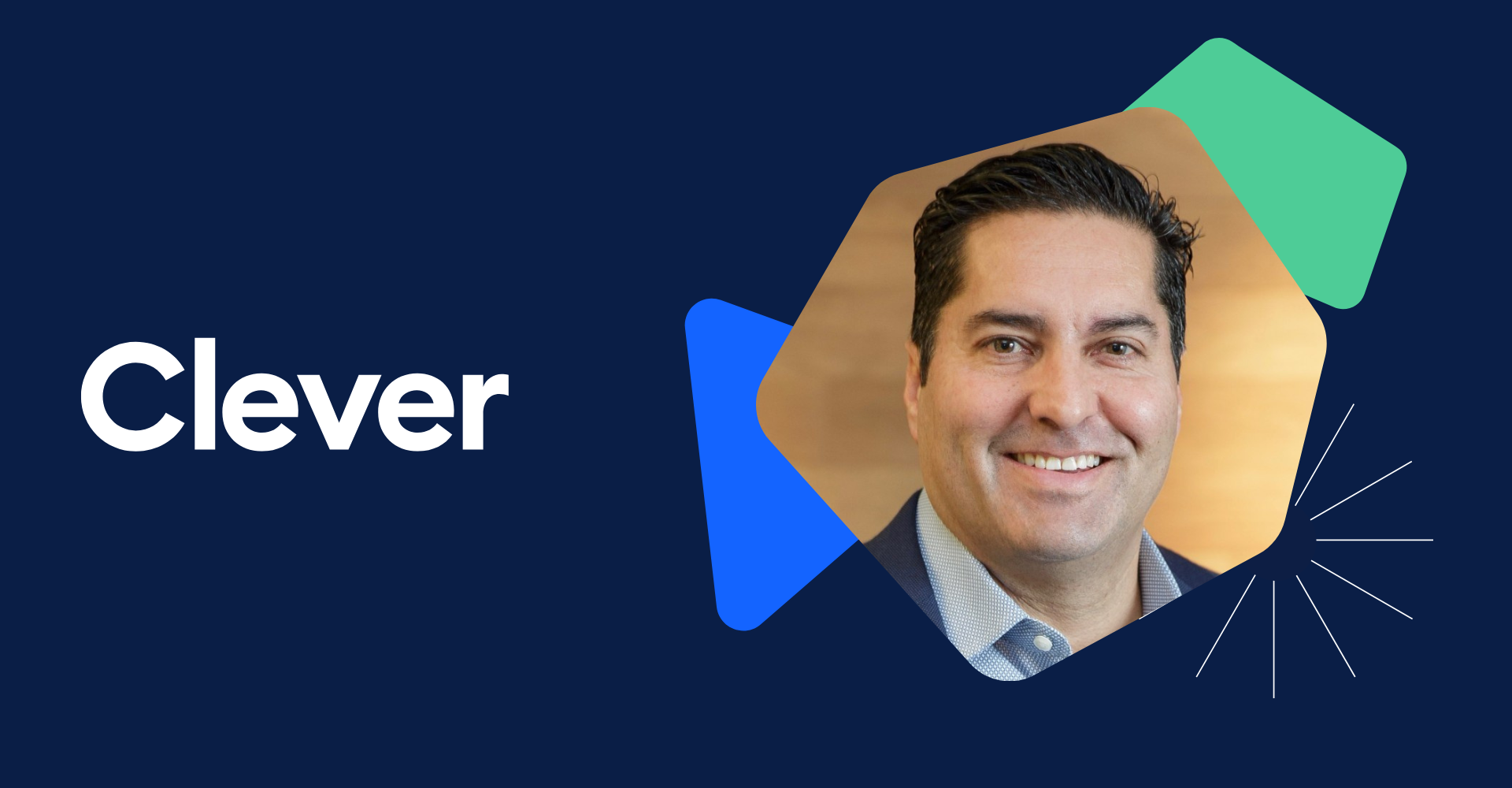Diversity report 2023
We share an update about diversity at Clever for 2023. See our Inclusion and Belonging Year in Review for 2023 for more about our inclusion and belonging efforts overall. This post is part of a series focused on inclusion and belonging.
Amid an increasingly hyper-political environment surrounding this work, it’s important to stay focused on commitments we’ve made and what we know is right for becoming the organization we want to be long-term. Particularly, our goal remains the same: To become an employee workforce that’s as diverse as the schools we serve.
Making progress toward that goal proved challenging this year because of tough macroeconomic conditions that impacted many companies across the technology sector. Regardless, accountability around our goals and commitments are still critical and part of our values of what it means to thoughtfully engage in representation and inclusion work. And we continue to be steadfast in our annual practice of sharing Clever’s demographic data.
The data
Before we share our commentary and reflections, let’s start with what’s most important: the data itself.
See Clever’s Annual Diversity Report for the 2023 Year

This information was collected from our human resource information system in October 2023. For previous data, please see our 2022 Diversity Report. Please also see our notes on methodology at the bottom of this post.
Race/Ethnicity at Clever
Unfortunately, we did not meet our 2023 aspiration of increasing Black representation or increasing Latinx representation. For Clever overall, the representation of Black employees decreased slightly from last year. The representation of Latinx employees increased slightly. In general, the representation across race/ethnicity at Clever has not shifted much since 2022.
In our technical departments, we saw a decrease in Black representation from 8.8% last year to 7.1% this year and a decrease in Latinx representation from 11% to 9.5%.
Our non-technical departments saw an increase in Latinx representation (from 9.9% to 11.6%) and East Asian representation (from 6.1 to 7.4%). Representation for Black, Middle Eastern and/or North African, South Asian, Southeast Asian, and White employees remained relatively flat from 2022 to 2023.
One area we continue to monitor each year is the diversity that exists on our manager and executive benches. Our manager bench experienced a slight increase in Black representation and South Asian representation but a decrease in Latinx representation. White managers and executive team members continue to make up a dominant portion of Clever leadership.
Gender identity or expression at Clever
We are proud that we reached our aspiration this year to increase gender diversity specifically in our engineering organization. In 2022, 32% of engineers identified as women or non-binary. In 2023, this increased to 40% of engineers.
Our tech organization, which comprises engineering, product, and design, has the most diverse gender representation overall at Clever – 49.2% identify as men, 35.4% identify as women, and 10.8% identify as non-binary.
Our non-tech departments, managers, and executives are predominantly women.
An area of improvement for Clever is to continue increasing the representation of employees who identify as non-binary and/or gender-non conforming.
Intersectional race and gender
Since 2021, we have also shared high level demographic data at the intersection of race and gender. Intersectionality, a framework first coined by Kimberlé Crenshaw in 1989, helps us unpack how race, gender, and other social identities might overlap with one another to create systems of power that advantage and disadvantage folks differently. Intersectional data provides more nuance and uncovers what could remain hidden with aggregated data.
With intersectional data, we can even more intentionally understand who is underrepresented at Clever. In this year’s data set, it’s clear that Black men, Hispanic/Latino men, and Hispanic/Latina women are underrepresented. Non-binary folks of all races are also underrepresented.
Our reflections and learnings from the year
Focus on retention
We’ve always believed that a focus on retention is a non-negotiable to becoming a more diverse organization in the long-term. And because Clever did less external hiring this year than in previous years, retention was even more critical. While factors around retention are often multifaceted, one of the key drivers is career growth and development. Thus, one of our People team priorities in 2023 was centered on employees feeling like they have career development opportunities across all levels and functions.
Of course, career development can mean different things to different people, from promotions to building skills to understanding one’s career pathway at a company. We expanded our leadership development offerings and role-specific learning opportunities. We started a process to revamp our job levels to provide more clarity around pathways. We worked on manager enablement to increase frequency and bring more consistency to career conversations. We also analyze all performance and promotion data for equity across demographic groups, elevate areas of concern, and work to rectify them. Additionally, our efforts around building company culture provides another lever for retention. You can learn more about that work in 2023 Inclusion and Belonging Year in Review.
Undoubtedly, our retention efforts could still be improved, and there’s always more we’re striving to do to support our employees while they’re at Clever and beyond. Of course, there’s attrition that we’re happy about, especially when employees further their education or switch career paths into something we don’t offer. However, it’s the attrition that we could and should have prevented that we spend extra time thinking about and strategizing how to mitigate this for the future.
I’ve seen the shift in the way the company discusses employee performance over the last year —we are now more focused on employee growth and development within level vs. purely evaluative. This has led to more equitable and meaningful conversations in calibrations and performance check-ins.
-Joelle Barrios, People Operations
Improving internal hiring and recruiting structures and processes
Given the decreased external hiring activity, this presented a prime opportunity to dive into the work of overhauling portions of our hiring and recruiting process through a lens of more access and fairness.
Our recruiting team, alongside a cross-functional working group, spent the year reviewing all of the interview questions we have ever used to ensure they align to the day-to-day work and can be answered with clear behaviors and evidence. The team restructured our hiring guides for all departments for more consistency. They evaluated the efficacy and equity of any assessments used throughout a process. And lastly, the team has started work to modify hiring rubrics to anchor more on evidence.
Our recruiting team is deeply passionate about leading fair and equitable processes that help us identify amazing talent, and this work will undoubtedly set us up for the future when our external hiring efforts increase.
Build a culture of partnership to interrupt bias
No organization is immune from bias, which can influence any decisions related to people from hiring to assigning work to promotions. But the work of checking bias can’t be the responsibility of just a few people. Rather, how might we distribute responsibility across the organization for interrupting bias when it emerges in the spaces we find ourselves in? This means normalizing and creating a culture of interrupting bias. Interrupting bias is often more of an art than a science. It’s also natural that people feel nervous to have bias named and believe if it is, they’re being “called out.” So making this part of the culture is inevitably challenging.
That said, we can view interrupting bias as part of a mutual partnership where we’re attempting to build a collective community that truly recognizes every person carries bias. And that, in fact, we will all make mistakes around bias at some point. It cannot be avoided. Even DE&I practitioners and professionals make mistakes; this is just part of the learning journey.
But instead of staying silent when we see or experience something, we can partner together and support each other to understand a different perspective. And we can absolutely name bias in a way that is constructive and thoughtful while simultaneously giving grace when naming bias is not perfect. We can all embody a mindset that everyone is still practicing. We can also support people to feel less defensive when bias is named – rather, it’s just part of what it means to adopt a true DE&I lens.
One way that we’re practicing and getting better at interrupting bias company-wide is through a new experiment where we pair hiring managers and recruiters with a hiring advocate, or another employee whose sole goal is to name and surface bias and support all stakeholders in a specific hiring process. They are specially trained on implementing techniques and strategies to practice interrupting bias, particularly across lines of positional power. This role gives an additional trusted partner to the hiring team, alongside the hiring manager and recruitment team leader.
We don’t think this is a magic panacea for creating the culture we aspire to. However, we think it can be a start and get more people actively practicing and proactively checking for bias and inequity. We also believe it spreads the load of inclusion and belonging work across the company since uprooting bias and inequity should be part of everyone’s role.
To find out more about our inclusion and belonging efforts in 2023, please see this blog post here.
A note on methodology
For all data presented here, our reporting minimum was more than 3 employees who identified with groups. Otherwise, we risked potentially violating privacy.
We count multiracial people as a member of all the racial/ethnic categories they identify with; this is denoted with a plus sign. Because of rounding and how we ensure the identities of multiracial people are fully honored, the individual percentages may not add up exactly to the overall percentage.

More to read

December 17, 2024
Year in review: Inclusion and Belonging in 2024A snapshot of our learnings around inclusion and belonging for 2024 – our focuses, our progress, and where we need to improve.


August 9, 2024
Welcoming Texas-based Dominic Via as Clever’s VP of SalesLearn about the major challenges Dominic Via is seeing for K-12 leaders, the latest successes in Texas schools, and upcoming trends that will impact school districts this year.

















